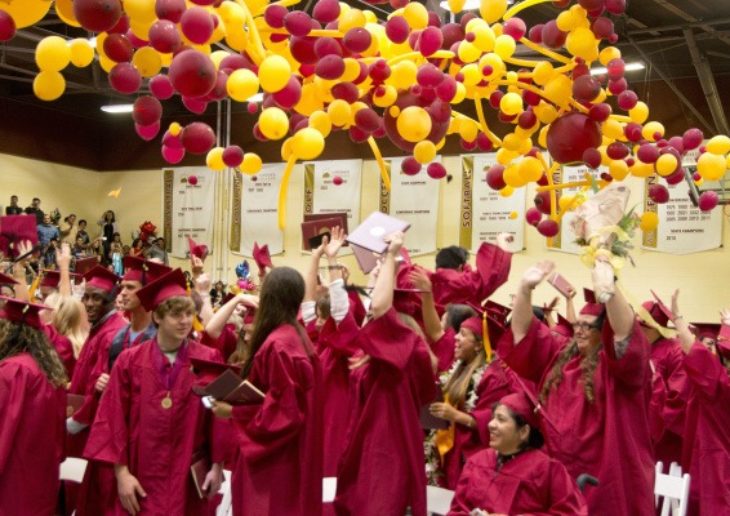June 01, 2021

Fabiola Fuentes never saw herself as college material; she came to Saddleback College solely for its cost-free High School Equivalency (HSE) program, which prepares students to pass the HiSET or GED test. But thanks to the HSE program, Fuentes is now enrolled in cost-free, college credit courses and determined to transfer to Cal State Fullerton to study international business.
“I never thought it was possible for me to be in college,” said the 44-year-old native of Peru. “I had a lot of doubt. But the teachers won’t let you doubt yourself.”
Fuentes is benefitting from the new HSE Dual Enrollment Program that allows high school equivalency students to enroll in up to 11 tuition-free units each semester. Students are required to meet with a counselor and map out an education plan to ensure their success.
The program introduced this year was authorized under Senate Bill 554, a state measure signed into law by Gov. Gavin Newsom in 2019, encouraging pathways to college for students from underserved communities with historically low levels of postsecondary education and training.
“It opens the doors to opportunity,” said Dr. Karima Feldhus, Saddleback College’s Executive Dean of Extended Learning.
“Our goal is to assist students with becoming familiar with Saddleback College while in the HSE program so that they can quickly move into courses that will position them to earn a certificate or degree and get ready for a new career,” said Sue Donelson, Saddleback College’s Director of Adult Education.
Fabiola Fuentes is Exhibit A on the initiative’s success.
“A lot of people who are immigrants and don’t speak English well don’t believe in themselves,” Fuentes said. “At Saddleback College, they make you believe in yourself. My instructor, Linda Ambrosini, never lets you doubt your ability. And now I’m in college. It’s hard to believe this all happened.”
Fuentes is one of 23 HSE students who are concurrently enrolled in Saddleback College for-credit courses. Joseph Villa, 65, is another.
Villa was just a class or two short of earning his high school diploma some 47 years ago. After his business was impacted by the fallout from the COVID-19 pandemic, he decided to go back to college and decided to attend Saddleback. He later learned, however, that he needed to have a high school diploma or equivalency certificate to qualify for financial aid. That’s when he discovered the HSE program. Now he’s also enrolled in a business technology course.
“The counselors and staff have transformed my attitude, vision, and educational plans and consequently, my life and career,” he said. “The Personalized Smart Plan my counselor helped me design has applied SB 554 and has allowed me free tuition for 11 free credits per semester. Everyone wants higher earnings. A higher education will get me there.”
The HSE and dual-enrollment program is but one option for residents looking for education and training to better their standard of living. Saddleback College’s free certificate programs falling under the HSE umbrella run the gamut and include culinary arts, basic technology, language arts, math, Adult Education ESL/Citizenship, and more. In all, Saddleback College offers more than 100 CTE certificate and degree programs and more than 1,000 CTE courses.
The options are worth investigating. Students not only can train for a job without going into debt, but data shows those who complete a career education certificate program earn – on average – $7 more per hour than they did before their training began. That comes out to more than $13,400 annually, or more than $500,000 over the course of a working lifetime. More than 70% of enrollees secure a job in three months or less.
The wage differential for those with a high school diploma or equivalency certificate is also substantial; full-time workers without a diploma or equivalency certificate are earning an average annual wage that is $8,000 less than full-time workers with a diploma or equivalency certificate.
More than 220 students are currently enrolled in the Saddleback College program, some because their employer requires them to have a high school diploma, others to serve as a role model for their family.
“Most are adults who are coming back to further their education after raising their children or taking care of a family member,” said Dr. Feldhus. “We also have high school students who were impacted by the pandemic and fell behind on their studies. We also have DACA students who are required to earn a high school diploma. All of them are being exposed to the wonderful programs we have at Saddleback College and the opportunity to transition into for-credit, college courses.”




